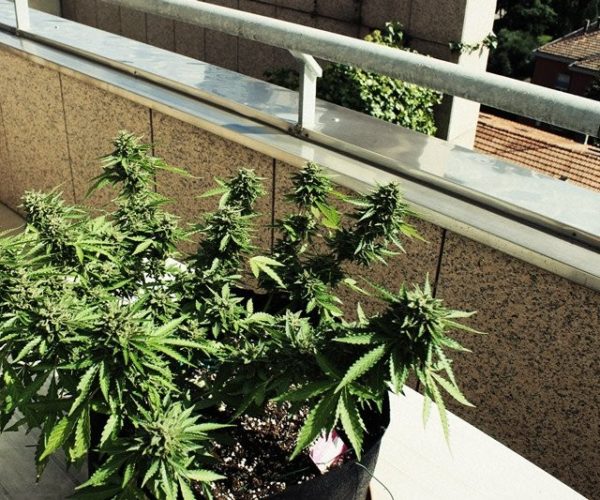- It is a blessing if you get to grow your cannabis, as you are in charge of every aspect.
- Take the correct and necessary steps, and you’ll get high-yielding cannabis that is of the best quality.
- However, growing cannabis is easier said than done.
- It is not just getting a tent, using some light, and giving the plants water and nutrition.
- Growing weed for a beginner can be an overwhelming task, but once you’re through with the basics, growing them is easy.
1- Decide the location
There are two ways to grow cannabis: –
- Indoors- you are in full control of the environmental conditions, such as the temperature, lights, humidity, medium, etc. The place should have a proper water supply, and the room should get a fresh supply of air.
- Outdoors- the plant will also face the effects of the temperature and humidity of the place where you reside. You need to take care of the worms, insects, pests, etc. Although you save a lot on the energy bill when grown outdoors.
2- Look at various mediums
There are five main types of mediums used to grow cannabis: –
- Soil- the seed is planted in the soil and is grown like a conventional plant.
- Soilless mixture- cannabis is grown in anything but soil, such as coco coir, vermiculture, and perlite.
- Hydroponic- as the name suggests, they are grown in water. Growing in hydroponics gives you faster and bigger yields.
- Aeroponics- these plants are grown in soil, but their roots are left open in the misty air.
- Aquaponics- it is an interesting way, as cannabis is grown in aquariums using fish as a medium.
3- Choosing the right light for your plants
You can use five types of lights, and they are as follows: –
- Natural light- this is a free and powerful source that gives you the best yield, but only possible in outdoor farming.
- LED lights- LEDs have the perfect color spectrum that is needed for optimum growth.
- CFL- household lights are not the optimum choice, but newbies can learn a lot from this method.
- High-pressure sodium lights- HPS produce bright yellow light and are cheap.
- Light-emitting ceramic lights- LEC gives the perfect UV light, and they are more efficient.
4- Get the right seeds or clones
Purchase your seeds or clones from a reputed seed bank. For newbies, the best choice would be to buy some autoflower seeds or feminized seeds.
Do not purchase regular seeds or clones, as they are not the ideal choice for a newbie.
Once you gain experience and understand the difference between seeds and clones, you can experiment with a few clones.
Depending on the conditions mentioned above, you can find the perfect seed by doing some research.
You can also ask a few local growers about the best seeds and initially take some help from them.
5- Maintain proper nutrients and pH levels
Cannabis use three most important nutrients during their lifecycle: –
- Nitrogen- they help produce DNA and RNA and contain the genes of the plants.
- Phosphorus- phosphorus helps with photosynthesis and carbohydrate utilization.
- Potassium- helps acquire carbon dioxide used in photosynthesis.
The pH levels play a crucial role in the growth of cannabis.
The ideal range for pH in the soil is between 6.0-7.0 pH, and in hydroponics, the range is between 5.5-6.5 ph.
You need to purchase a pH meter that will help you test the pH levels in the medium.
6- Germinate the seeds
Germination is very important as it brings out the seed from its hibernation period and starts with the cannabis growing process.
For germination, the seeds should be in minimum water for at least 24-48 hours.
The best method to germinate the seeds is by wrapping the seeds in moist tissue paper and leaving them undisturbed for a day or two.
After a day, you can see the roots coming out of the seed. Once the root is seen, carefully plant them in your medium.
7- First is the vegetative stage
This step occurs after germination. The plant should be taken very well care of, as the plant will be very fragile.
The plant should get a minimum of 18 hours of light and enough nutrients such as: –
- Nitrogen
- Phosphorus
- Potassium.
This is the best time to train your plant to grow as per your needs. Many growers try low-stress training, topping, and fimming the plants.
If you’re a newbie growing weed, do not try anything. Let the plant grow, learn from it and then try any new methods the next time.
8- Second is the flowering stage
During this stage, your plants will produce leaves, trichomes, and buds. Once the plant enters the flowering stage, you need to: –
- Change light schedule
- Change the nutrients
- Lower the humidity
You can also check the gender of the plant if you’ve purchased regular seeds.
The females will have calyxes in the branch joints. The calyxes will have pistils, so there will be a lot of hairs.
The males will have pollen sacs in their branch joints that are easily visible. The sacs don’t have any hairs on them.
9- Finally, harvest your plants
This is a time of celebration, as you will reap the benefits of the plant you’ve grown.
You can identify the perfect harvest timing by: –
- Looking at the hairs on the pistil. Once they turn brown or orange, it is time to harvest.
- When around 70% of the hairs have turned brown, you can be sure that the THC levels in the buds will be high.
- When the hairs have turned completely brown, the THC has now become a cannabinoid.
10- Drying and curing the buds
Once you’ve removed the buds, it is time to dry them. Slowly dry your cannabis for best results.
The ideal temperature for drying is 70 degrees Fahrenheit.
Once the buds are dried up, place them in a glass jar to activate the curing process. The moisture will be absorbed by the buds and enrich their characteristics of the buds.
Bottom line
Growing cannabis is fun when done correctly by following these ten basic steps.For further details on Cannabis, please visit top cannabis seeds company, i49





